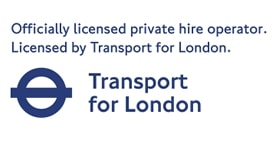London Gatwick Airport gears up for the big switch
At the world’s busiest single-runway airport, the builders are in. I am standing in a concrete shell high up in the South Terminal, with a formidable view over the runway and taxiways. This vantage point was, until recently, occupied by restaurants and lounges. It has been stripped down to the bare concrete to be handed over to a new tenant: British Airways. The airline is about to fit out a lounge complex so that its most commercially important passengers can enjoy a soothing or productive start to their journeys.
It is in the nature of a transport facility handling over 40 million people a year that some element or other of the infrastructure is constantly being worked on. But landside and airside, in both terminals, the pace of change is picking up. Gatwick is preparing for one of the most complex challenges since the Queen opened the airport in 1958: the big switch.
In nine months the present arrangements come to an end. From 25 January 2017, business travellers familiar with the Sussex airport will need to overwrite their memory banks. Your flight to Edinburgh, New York or Zurich may not be departing from the usual location.
For almost three decades, Gatwick has had two terminals. By the mid-1980s the original facility was getting stretched. So a North Terminal opened in 1988, adding acres of floor space and dozens of new gates. It became the home of British Airways’ Gatwick operation – “the hub without the hubbub”, as it was known for a while. The North Terminal is almost a mile from the South Terminal, connected by a driverless shuttle train.
Virgin Atlantic, the other big long-haul player, stayed put in the South Terminal. It was later joined by a small airline called easyJet. The upstart soon outgrew its allocation of space in the South Terminal and set up a parallel operation in the North Terminal.
For a decade passengers have had to ensure they are in the right place for their flight – even the then-president of Abta once missed his flight to the travel association’s annual convention after a terminal muddle. And the airline’s operational needs mean that some planes and passengers arrive at the opposite terminal to that planned.
Today, easyJet is Britain’s biggest airline by passenger numbers, and the largest operator at Gatwick by some distance. It will carry almost 20 million passengers in and out of the airport this year, more than twice as many as the second-placed carrier, British Airways.
Consolidating all easyJet operations in one location, with space to expand, is a logical step. The North Terminal delivers the right capacity, but only if British Airways moves south.
BA’s short-haul operation follows the same patter over the day as easyJet’s, with peaks early in the morning and in the evening. To make the most of available space, easyJet and Virgin Atlantic need to be co-sited: their operations dovetail, with Virgin’s departures occupying the middle of the day. So BA and Virgin should swap places.
Simple? Well, unlike the opening of Heathrow’s Terminal 2, Gatwick does not have the luxury of new capacity that can gradually be filled. Ideally, the infrastructure could simply close for a few weeks to allow for landside check-in systems and airside lounges to be reconfigured. But passengers, airlines and the airport itself would not countenance a shutdown of Britain’s second-largest airport even for a day. Which is why Chris Woodroofe, Gatwick’s head of passenger operations, is monitoring multiple timelines months ahead of the move. “We have 42 separate projects coming together,” he says.
There is nothing like a deadline to focus the mind. The last easyJet flight from South Terminal will depart on 23 January. The following two days are Tuesday and Wednesday, the quietest days of the week for flying – all the more so in the third week in January.
“On both days, easyJet will cut 40 per cent of its flying programme to help manage the switch,” says Woodroofe.
BA and Virgin Atlantic will continue as normal on 24 January, and that night will change places. When the first wave of flights from Florida and the Caribbean arrives on the morning of 25 January, the aircraft will taxi to their new homes. At the same time, staff will be on hand to meet departing travellers before they fly out, reminding them of the new arrangements.
For easyJet passengers, a single home removes complications. British Airways will no doubt make much of the attraction of its new location for business travellers; sharing a terminal with Gatwick’s rail station cuts out the shuttle trip. And after a year of sharing a commercial lounge, premium passengers will once again be in a BA oasis.
“This is a solution for the next 10 years,” says Woodroofe. After that, who knows what the Sussex airport will look like? The Government’s decision on whether to build the next runway at Heathrow or Gatwick does not appear to be as time-sensitive as the big switch.
Source: Independent




